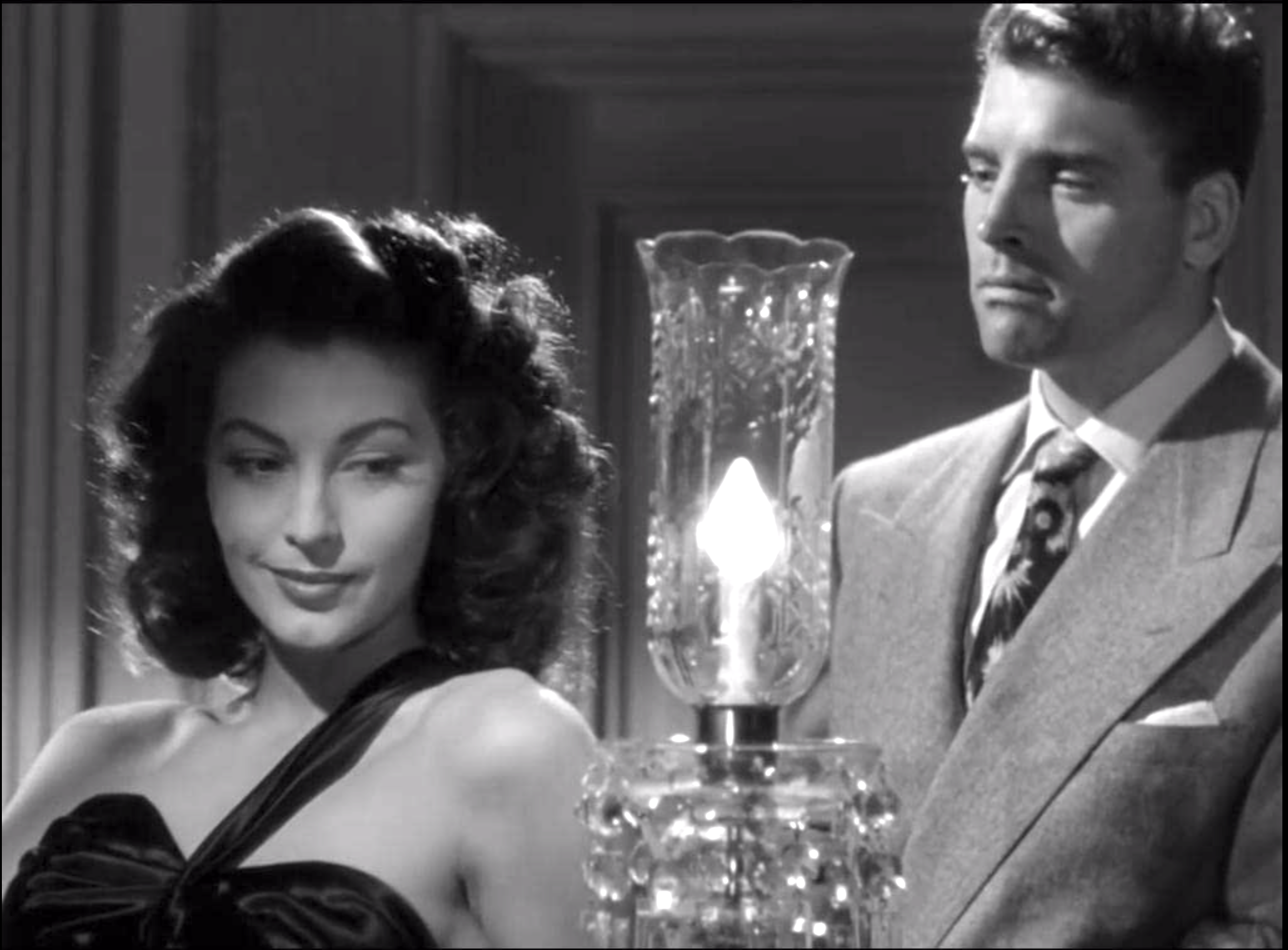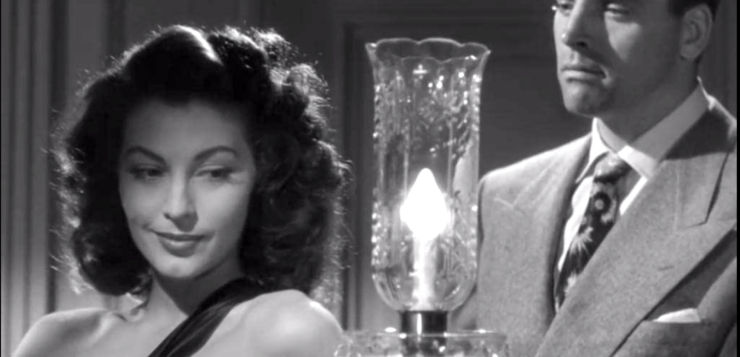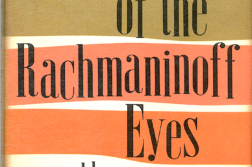THE “FEMME FATALE” gained a popular foothold in the detective fiction of the 1930s and then, even more visibly, in the great films noir of the 1940s and ’50s. In these narratives, the femme fatale often seizes command of the straight male gaze and harnesses it to her own purposes, her own pursuit of power. Given the dominant patriarchal attitudes of the era, in these storylines she is almost always revealed to be deceitful, cold, and self-serving. This being the era of the Hays Production Code, she is predestined to be punished, often to the point of death. Because she represents a woman trying to establish agency for herself, she is bound to be shut down. The narrative is making the implicit point that powerful women pose a threat to straight male dominance. It’s not surprising, then, that her popularity as a villain was never higher than when service men were returning from World War II seeking employment only to find that many of their jobs were filled by capable women.
Why, then, as a gay man and a mystery writer, am I so drawn to this archetype, so much so that I wrote my new historical mystery, The Savage Kind, as an exploration of and challenge to the archetype? Whether it’s Barbara Stanwyck’s severe bangs or Marlene Dietrich’s high cheek bones, it’s not an accident that drag queens have a long tradition of impersonating the femmes fatales of the 1940s. Over time, gay men—and LGBT people in general—have scoured popular entertainment for little glimmers of queerness embedded in mainstream culture. Even when the point of a book or film was to hold up a character, like the femme fatale, as an example of how not to be, we saw through the ruse, the shabby patriarchal curtain, and found something to admire in these “devil women”: self-possession, self-respect, and an unflinching desire for agency.
Okay, I know. Some of these characters do bad things, really bad things. The glamorous and bewitching Kathie Moffat (Jane Greer) seduces Jeff Markham (Robert Mitchum), the honest and mild-mannered hardboiled lead of Out of the Past (1947), entices him back into a life of crime, and eventually frames him for murder—only to, in the final moments of the film—shoot him. In The Killers (1946), Kitty Collins, played to perfection by Ava Gardner, much like Kathie, lures the lead Pete Lund (Burt Lancaster), a former boxer known as “The Swede,” into a romantic relationship. The Swede takes the blame for stolen jewelry Kitty’s wearing, spends three years in prison, only to emerge again, gets caught up in an elaborate payroll robbery, and then gets double-crossed by the endlessly resourceful Kitty. By the conclusion of this ordeal, he’s so depressed that he allows himself to be gunned down by a pair of hired killers. “There ain’t nothing to do,” he says when warned by a friend. “I’m through with all that runnin’ around.” Cleverly, the film begins with The Swede’s end, making the audience wonder why a specimen of masculinity such as Burt Lancaster has given up, folded his cards. The answer is Kitty Collins. He’s been brought low by a crafty, dishonest woman.

Until recently, queer people have had little to no representation in popular media, so it’s no wonder that, as a gay man who has his eyes peeled for even a dash of queerness in mainstream culture, I might detect something compelling just under the surface of this character. I find her deft manipulation of straight men thrilling, not because I approve of her deceitfulness or wish to emulate it, but because I understand why she might want to engage in it. In her sly smile and flashing eyes, I sensed a simmering frustration with the conventional social strictures quelling her independence.
When I first saw Fran Walsh and Peter Jackson’s Heavenly Creatures in 1994, I knew I’d seen something extraordinary. Based on the true Parker-Hulme murder case in Christchurch, New Zealand, in 1954, the film traces the relationship of two teenage girls, Pauline Parker (Melanie Lynskey) and Juliet Hulme (Kate Winslet). Although the girls are very different from one another—Pauline comes from a local working-class family and Juliet’s father is the rector at Canterbury College—they find solace in one another, initially bonding over their experience with childhood diseases. Their bond deepens into mutual infatuation as they start writing adventure novels together and fantasizing their being made into a Hollywood film. Pauline, who has an antagonistic relationship with her mother Honora, becomes more enamored with Juliet and the posh and relatively peaceful life in the Hulme household. Soon, though, it becomes clear that Juliet’s parents are unhappy with one another and that, in fact, her mother has been unfaithful. These travails intensify the girls’ relationship, which takes on a homoerotic dynamic when they pretend to seduce each other as aggressive alpha male characters from their fantasy life. This remarkable scene ends tenderly as the girls shed their pretenses. Homosexuality at this time was considered a mental disorder, and Pauline’s mother, who has become aware of the intensity of her daughter’s bond to Juliet, is particularly concerned. She decides to make a move to separate the girls. This creates a crisis for the girls, who can’t imagine not being together, so they hatch a plan to murder Honora Parker.
As difficult as the climatic murder scene in Heavenly Creatures is to watch—and it’s brutal—it’s also cathartic. In 1994, I was a nascent writer with a rich imaginative life. Juliet and Pauline were only four and five years younger than I, and I connected with them. What surprised me—and still does—is that it was the first time I’d seen queer people expressing full-bodied anger against a symbol of patriarchal culture, Pauline’s mother. The story of Juliet and Pauline was the femme fatale’s missing backstory, the sympathetic coming-of-age narrative I’d wanted for her. Her anger was no longer simmering behind her knowing eyes but screaming with blood on her face.
While seeing queer rage expressed on the screen made my younger gay self feel less invisible, it wasn’t a complete answer to the femme fatale or my attraction to the archetype. Since then, I’ve turned to fiction—a medium perhaps better suited for layered character development—to find multi-dimensional women characters, many of whom could be easily filed under “femme fatale.” Whether it’s Sula from Toni Morrison’s Sula, Grace Marks from Margaret Atwood’s Alias Grace, Carol Aird from Patricia Highsmith’s Price of Salt, or Lillian Barber from Sarah Waters’ Paying Guests, these women buck the patriarchal order and sometimes draw blood, but they always strive to be self-sufficient and true to themselves—and their stories end in an affirmation, not a punishment.
If films like Promising Young Woman and Cruella and the novels of Megan Abbott and Laura Lippman are evidence of anything, we continue to wrestle with this archetype as a culture. The femme fatale enthralls because she seems mysterious to the mainstream, because she’s an outsider wanting in, because she’s hungry for agency—all things that could be said of LGBT people. Ultimately, when given complexity in her character, she invites the question: Have you misunderstood me? We as a culture should wonder if we have. Perhaps what has been labeled as “evil” is simply righteous rage.
John Copenhaver is the author of The Savage Kind: A Mystery(Pegasus, 2021).






